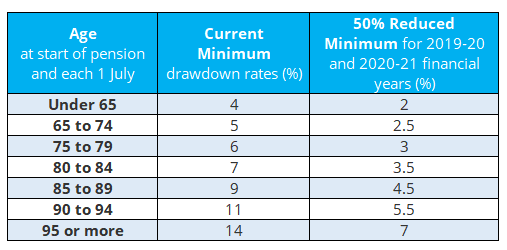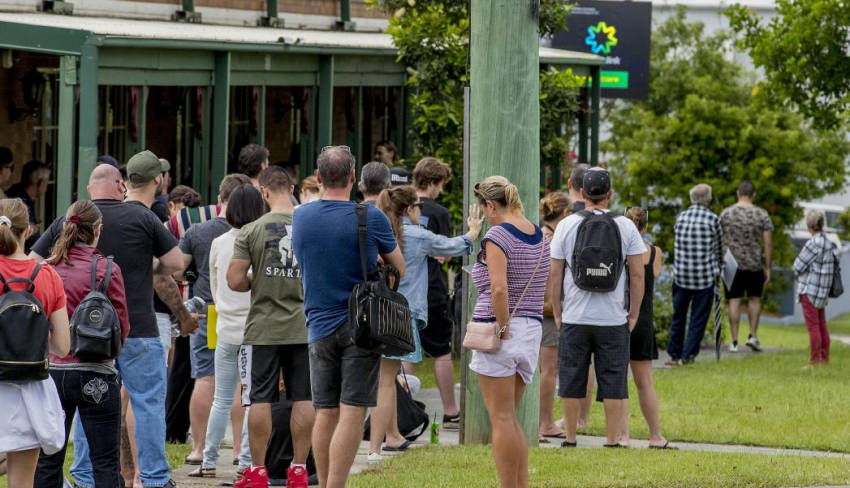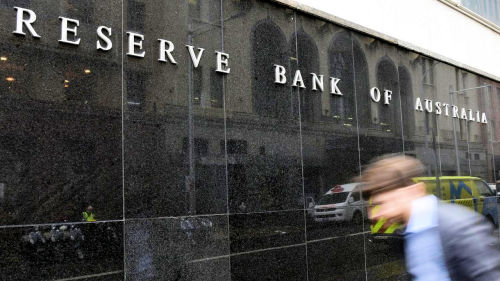This year’s pre-election Budget proposes cost of living relief through modest tax cuts, lower power bills, reduced co-payment for medicines and other measures

The Budget has swung into deficit with more forecast to come
The Labor Government’s finances still face significant structural challenges in addition to uncertainty from tariffs, elevated trade tensions, commodity prices, economic growth and geopolitical instability. We think these bigger issues are more important for investment portfolios than the Budget measures.
Interestingly, whilst this Budget was delivered just prior to the next Federal election (must happen by 17 May), it was not laden with the sweeteners that often accompany such Budgets, such as one-off payments to welfare recipients. The Government’s hands were somewhat tied in what they could do, so as not to add to counterproductive inflation, interest rates and other cost of living pressures.
Key economic observations
- The Budget forecasts a deficit in 2024-2025 of $27.6bn (1% of GDP), a $0.7bn deterioration compared with the Mid-Year Economic and Fiscal Outlook (MYEFO) projections in December. This marks a notable turnaround from a $15.8 billion surplus recorded in 2023-2024 with deficits projected to continue over the forward estimate horizon. The deficit is expected to widen to $42.1bn (1.5% of GDP) in 2025-2026.
- Most of the changes to the budget profile are the result of policy decisions with $34.9bn in net new measures since the MYEFO. Many of these have a flavour of cost of living support, including extended electricity rebates, increased Medicare funding and small tax cuts.
- The budget continues to face significant structural challenges with strong growth in expenditure on programs such as the NDIS, aged care and defence. Off-budget items are also much higher than in the past, adding to the government’s funding task.
- The dominant risk has shifted from the inflation trajectory to the potential impact from global trade disturbances. However, risks to the budget projections are two sided:
- Windfalls from commodity prices will fade but may be slower to decline, Treasury typically makes cautious assumptions on the outlook. We expect the price of iron ore to end 2026-2027 at US$85/t, above the budget estimate of US$60/t by mid–2026. Conversely, rising trade tensions and heightened policy uncertainty may precipitate an earlier decline in commodity prices and weakness across other revenue channels.
- More unsettled financial markets could also test the Treasury’s technical assumption for 10 year yields of 4.4%. That in turn could limit the government’s fiscal space to implement counter-cyclical measures to help absorb future shocks, as it did during the Global Financial Crisis (GFC) and COVID-19. This comes at a time when growing geopolitical uncertainty, increasing trade tensions, more frequent weather events and ongoing technological change may mean shocks are more frequent.

Lower income households and Small to Medium Enterprises (SMEs) are the clear winners:
- The government also remained focused on renewable and clean energy as part of the Future Made in Australia (FMIA) initiative.
- Defence spending has been brought forward, but no new spending in this area was announced.
- While not directly targeted for measures, retailers will benefit from the support to consumers, and those in the manufacturing space will benefit from the FMIA and defence spending.
- The Budget however may not have met all expectations and hopes. Notably, no new measures for the agriculture sector were included this year, with several initiatives already in place.
Several notable omissions from the Budget
- No superannuation-related proposals in the Budget this year.
- No mention of the Labor Government’s plan to impose additional tax on the growth in superannuation balances over $3m, which does not currently have sufficient support to pass in the Senate. Of significant concern are two contentious points about the proposed tax:
- Taxation of ‘Unrealised Gains’ as at 30 June each year as part of the intended policy, and
- No indexation on the $3m threshold each year. This means that in 10 years time the real value of $3m would be approx $900k if not increased for inflation or 3% CPI each year, creating another setback for younger generations – many already struggling with housing unaffordability.
- No reform to the taxation of family trusts, despite the significant uncertainty for family groups as a result of recent court decisions.
- No trade and tariff policy of a fundamental nature given trade barriers rising around the world.
- No GST reform, or changes to the GST base or allocation of GST revenue.
- No mention of an extension to the small business instant asset write-off benefit which will end as planned in July 2025. The tax break allowed businesses to claim an immediate $20,000 deduction from their taxes and this is set to fall back to $1,000.
Taxation
Personal tax cuts
The Government intends to decrease the current 16% personal income tax rate to 15% in 2026-27 and 14% in 2027-28, as per the following table

Annual tax saving in 2025-26, 2026-27 and 2027-28 (compared to 2024-25)

Cost of living
Energy bill relief extended for six months
All Australian households and eligible small businesses will receive an additional energy rebate of $150. The rebate will be automatically applied to electricity bills between 1 July and 31 December 2025, in two quarterly instalments of $75. It’s expected that the eligibility rules that apply to small businesses will remain unchanged.
Student loans to be cut by 20%
Student loans will be reduced by 20% before the annual indexation is applied on 1 June 2025. The changes will apply to all HELP Student Loans, VET Student Loans, Australian Apprenticeship Support Loans, Student Start-up Loans and Student Financial Supplement Scheme.
Reduced student loan repayments
The income that can be earned before student loan repayments need to be made will be increased from $54,435 in 2024/25 to $67,000 in 2025/26. Also, repayments will be calculated on just the income earned above the $67,000 threshold, not on total income. The list of eligible student loans is covered in the measure above.
Lower cap for PBS medicines
The maximum cost of Pharmaceutical Benefits Scheme (PBS) medicines will decrease from $31.60 to $25 per script from 1 January 2026. Pensioners and Commonwealth concession cardholders will still only pay the subsidised rate of $7.70 per PBS script until 1 January 2030.
Medicare bulk billing incentives
Incentive payments will be introduced to expand bulk billing to all Australians from 1 November 2025. Also, a new Bulk Billing Practice Incentive Program will be introduced for general practices if they bulk bill every visit under Medicare. Nine out of 10 GP visits are expected to be bulk billed by 2030.
Expanded ‘Help to Buy’ program
The Help to Buy program was established to assist eligible individuals with the purchase of a principal place of residence. Expected to commence later this year, the Commonwealth will provide an equity contribution up to 30% of the purchase price of an existing home and up to 40% of the purchase price of a new home. The income cap and property price caps used to determine eligibility will increase. For singles, the income cap will increase from $90,000 to $100,000. For joint applicants (and single parents), the income cap will increase from $120,000 to $160,000. The property price cap depends on the location of the property and details can be found in the Government’s media release.
Social security
‘3-day guarantee’ for child care subsidy

Families will be eligible for at least 72 hours per fortnight (three days per week) of subsidised Early Childhood Education and Care (ECEC) without having to meet certain activity requirements (such as paid work, volunteering and studying). Families that still meet activity requirements, care for a First Nations child or have a valid exemption, can continue to get 100 hours of subsidised ECEC. A family income test limit ($533,280 in 2024/25) will still need to be met to be qualify for subsidised care. This measure is legislated to start from 1 January 2026.
What the budget means for the Australian economy
The economic assumptions embedded in the Budget are generally consistent with the views of the Reserve Bank of Australia (RBA). Growth is expected to be trend-like over the next year and then improve in FY27. Inflation is expected to be consistent with the RBA inflation target.
Household consumption is expected to pick up over the next 12 months. Whilst we think this is appropriate, there are risks to the rebound not being as strong if global uncertainty remains elevated. Additionally, it is possible that the interest rate cuts are shallow and do not provide as much of a boost if households prefer to maintain mortgage payments and thus reduce their debt.
Implications for your financial strategies and investments
We believe this Budget has limited consequences for investment markets this year, given the domestic uncertainty around the pending election and the global uncertainty around US trade policy and growth in China and Europe.
The tax cuts for consumers are not set to kick in until July 2026 and are not likely to have a major impact on consumer spending – especially when the savings rate is already quite low.
Taking a long term view
Fintech Financial Services remains committed to utilising market leading research providers and investment managers to not only mitigate risk in your portfolios, but look for opportunities to investment in line with your investment risk profile and objectives for the long term.
Your portfolios are robust and constructed so that they can perform well over the long run, while minimising risk, come what may.
Good financial advice takes a full spectrum approach
Importantly, we understand the interaction of all the connected parts of your financial strategy needs and how a change in one area has a flow on effect in other areas. Our comprehensive and disciplined approach to the financial strategies that deliver valuable outcomes to your needs and what’s important to you in life, is what makes the most difference above and beyond good investment returns.
Remember, things will always change in investment markets, government legislation and your personal circumstances. We are looking forward to continuing to work with you, maximising your financial outcomes no matter what the future brings Our approach helps you make smarter financial decisions.
Where to from here?
Many of the measures announced in the 2025-2026 Federal Budget need to be passed as law to take effect. With the 2025 Federal Election expected to be called shortly, there are limited days for both houses of Parliament to sit to pass these measures.
As always, please contact our office if you would like to discuss any of the above in relation to your specific circumstances.
Grant






 Deloitte Access Economics reported in their Business Outlook in January that there’s a large gap between what the RBA is saying, and what families and businesses are hearing. The RBA is boosting the economy both because it is weaker and because it is different. The first factor on its own is a concern for families and businesses, but the second, a different economy with more profits and more jobs – but less in terms of wages growth – is actually a mixed blessing.
Deloitte Access Economics reported in their Business Outlook in January that there’s a large gap between what the RBA is saying, and what families and businesses are hearing. The RBA is boosting the economy both because it is weaker and because it is different. The first factor on its own is a concern for families and businesses, but the second, a different economy with more profits and more jobs – but less in terms of wages growth – is actually a mixed blessing.

